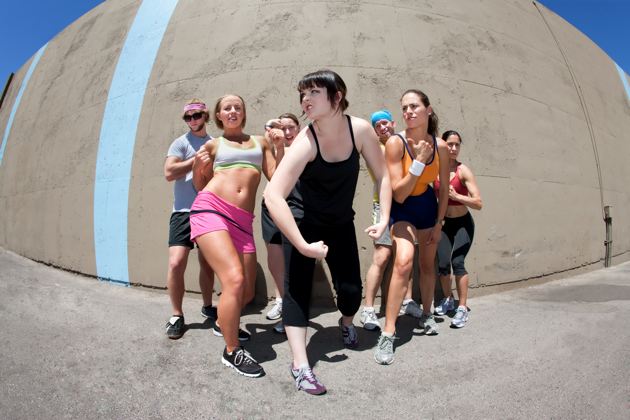After one of my classes recently, a young student told me that she’d just completed her own personal challenge of 30 days of yoga. She was glowing, eyes bright and a beautiful smile on her face. That’s what yoga can do! And I was thrilled she’d had such a positive experience with her 30-day challenge.
Yoga is powerful and can be even more so when you commit to the practice so enthusiastically. However, other scenarios can unfold from a lot of yoga, too—from getting bored to muscle strains or other serious injuries. Speaking to the latter examples, while yoga practitioners are less prone to injury on the mat than, say, ultimate fighters, yoga is by no means exempt from pain. Like any other physical activity, yoga can lead to injuries when not approached mindfully. Earlier this year, we got a heck of a download of examples of yoga-related injuries during the debates surrounding New York Times’ writer William J. Broad’s yoga features and book, The Science of Yoga. Controversy aside, a useful take-away from that episode was that it increased people’s awareness that yoga should be treated seriously and not as though it is merely a series of simple stretches.
No Pain, No Gain?
Remember the fitness philosophy popular in the 1980s, “no pain, no gain?” This adage certainly strengthens resolves to exercise, but when it’s interpreted at its extreme, it can also lead people into the realm of injury. When I started my yoga practice at a gym, I approached it as a low-impact supplement to my more intense cardio and weight-training regimen. I was a working professional with a limited amount of free time, and when I worked out, I wanted it to count. Fitness classes were evaluated by how much I sweated (meaning if I didn’t leave a puddle, I considered it a waste of my time). So the yoga class I chose was a vigorous, Ashtanga-inspired class with lots of push-ups, challenging binds & seemingly impossible poses. Let me reiterate, this was my low-impact exercise choice.
In hindsight, it was not exactly low-impact, but it appealed to the no-fear-no-excuses fitness junkie in me. Thankfully, in spite of my less than compassionate reasons for choosing the class, I was able to avoid injury because I happened to walk into a class with a knowledgeable instructor who gave lots of smart adjustments to help inform my new practice, and it kept me engaged enough to realize there was way more to yoga than a sweaty workout.
Practice No Harm
Before yoga, I’d never thought that I could be comfortable during a workout. If I wasn’t struggling, clearly I wasn’t trying hard enough. I’ve since learned that if you walk in with that kind of attitude into a yoga class, and you just might get your butt kicked… in a bad way. Consider scenarios when you are practicing near a person who wraps into an intricate bind, so you think you have to do the same even if you’re not ready, or when you ignore an existing injury and force poses that push you beyond your safe edge. Unfortunately, these decisions put your body in second or third place behind your ego or a fear of looking weak, and ultimately can lead to a serious injury.
If or when you’re faced with the choice to push forward or back off in a yoga practice, consider one of the Yoga Sutras’ yamas (restraints), ahimsa. Defined as non-harming or non-violence, ahimsa not only refers to our behavior toward others, but it includes self-care. Rather than pushing past a point of safety, take a kinder, honest and respectful approach for you and your body. For example, if you have a limited range of motion, choose modified poses rather than advanced variations. Or if you’re still healing from an injury or illness, elect a gentle practice rather than a vigorous practice that might only worsen your condition. Just as you might support a friend going through a tough time, take more of an active role in supporting your body in your practice. Educate yourself, whether it is by doing research on poses at home or asking a knowledgeable yoga instructor questions about alignment. Trust me, as a yoga instructor, we love those questions because we know the students are listening and engaged in the practice.
Self-Care Off The Mat
Practicing ahimsa not only can inspire how you address your yoga practice, but it can inform how you do everything, too. In my work as a yoga instructor and freelance writer, I must continually remember ahimsa when my body is not warm enough to demonstrate a pose in class or when I’m tempted to take on more projects on top of an already busy schedule. Indeed, by offering ahimsa to all you do to take care of you, from the work you choose, what you eat, your relationships and other pursuits, life can feel sweeter as a result. Surprisingly, or not so surprisingly, when you start taking care of yourself, the rest of the support you offer to others improves as a result as well. So, in a way, ahimsa starts with you!
The instruction “don’t hurt yourself” might seem obvious and unnecessary to point out, but it is remarkable how often we can unintentionally hurt ourselves when we don’t pay attention, whether it’s on the mat or off. On the mat, yoga shouldn’t feel painful. It can be a gateway to strength, relief and renewal (Check out fellow DYY contributor Silvia Mordini’s take on how yoga makes you happy, too). Instead of “no pain, no gain,” honor your health, your body and spirit to practice another day. The world may thank you for it someday.
Pose Therapy is a weekly column by Zainab Zakari that covers the challenges of yoga practice and how to master them. Do you have a yoga problem that you want us to cover? Comment below or email Zainab.


